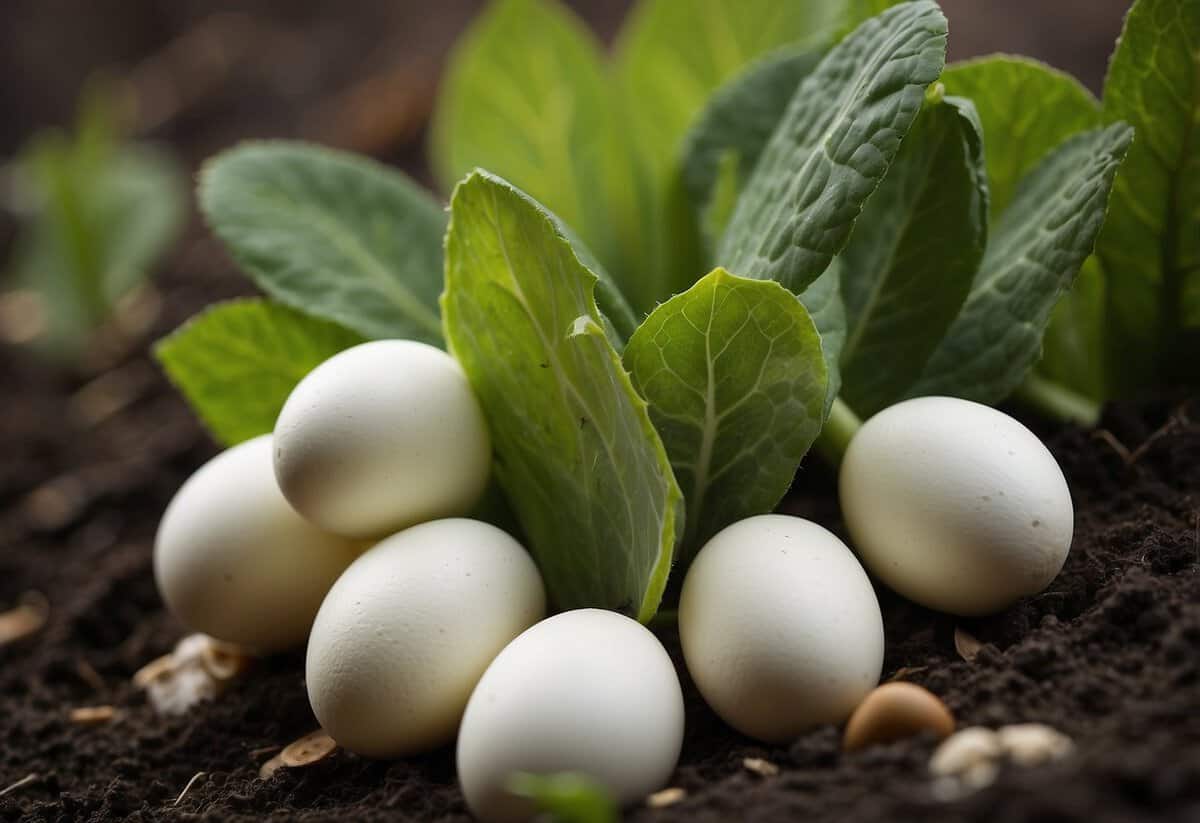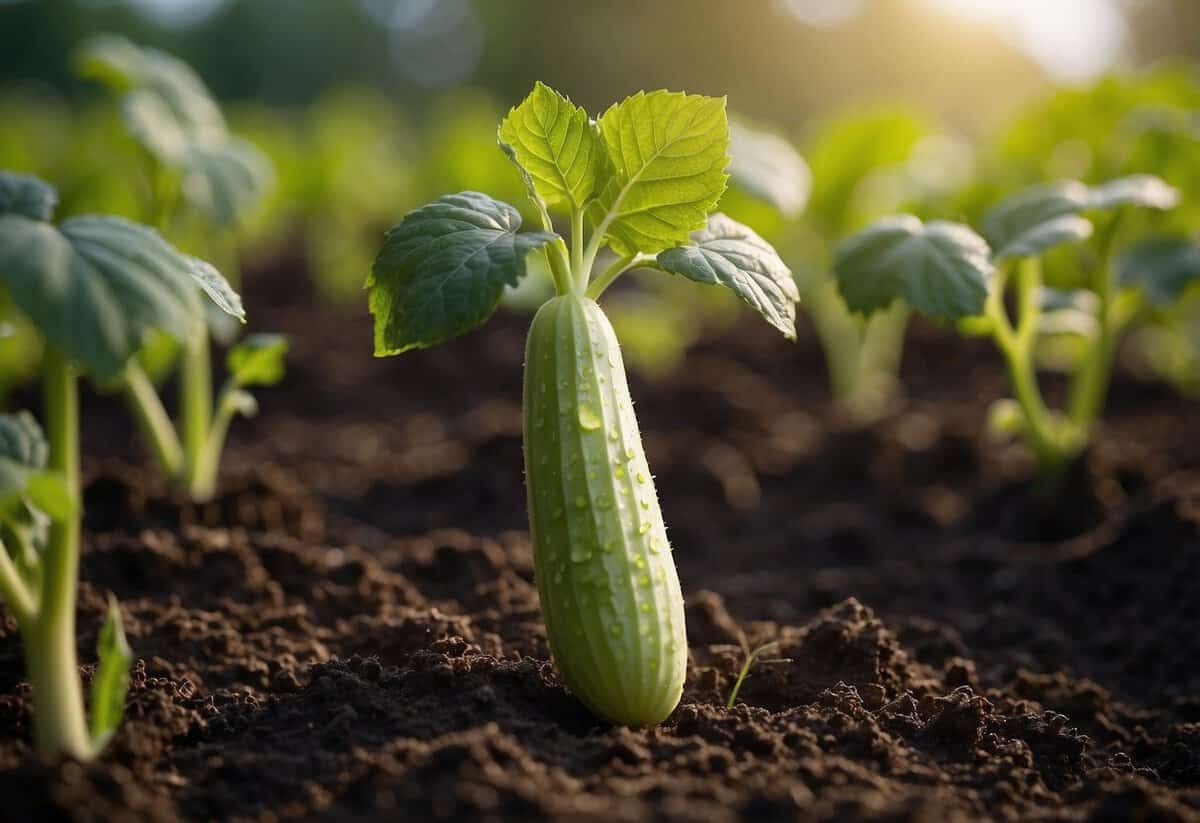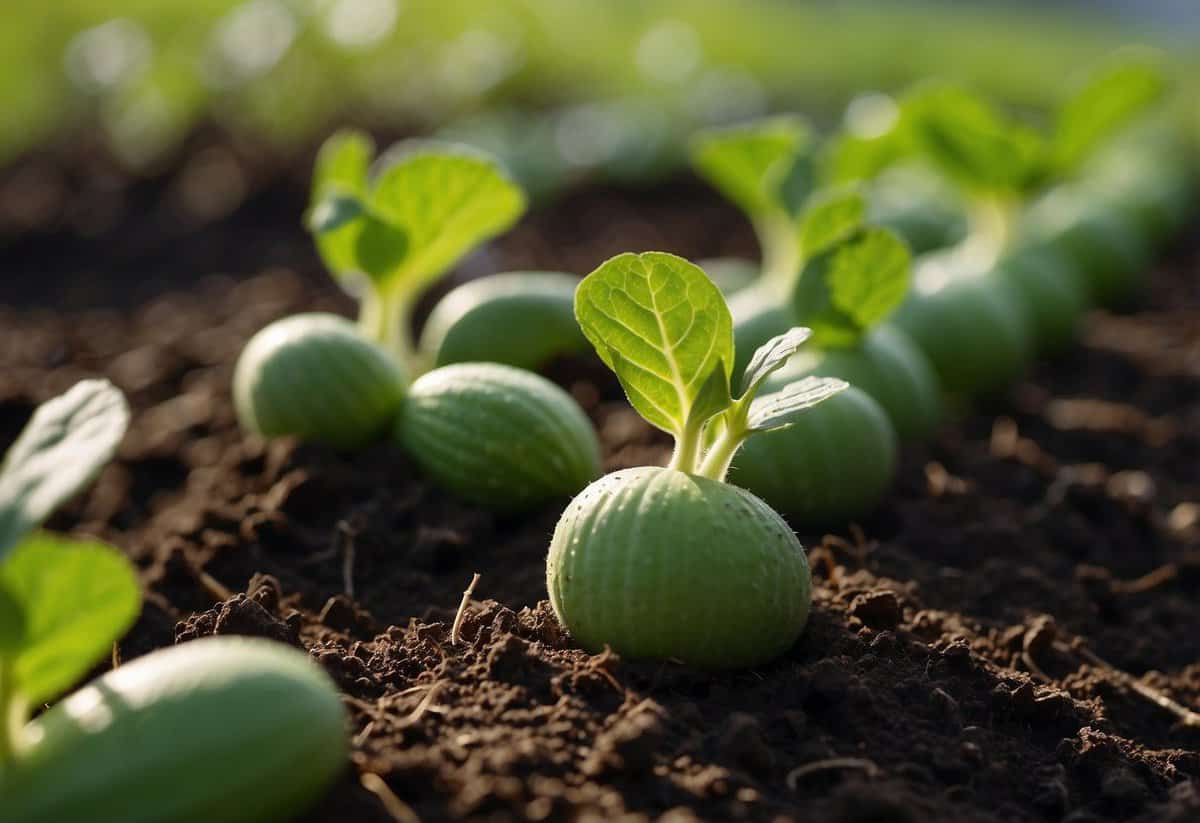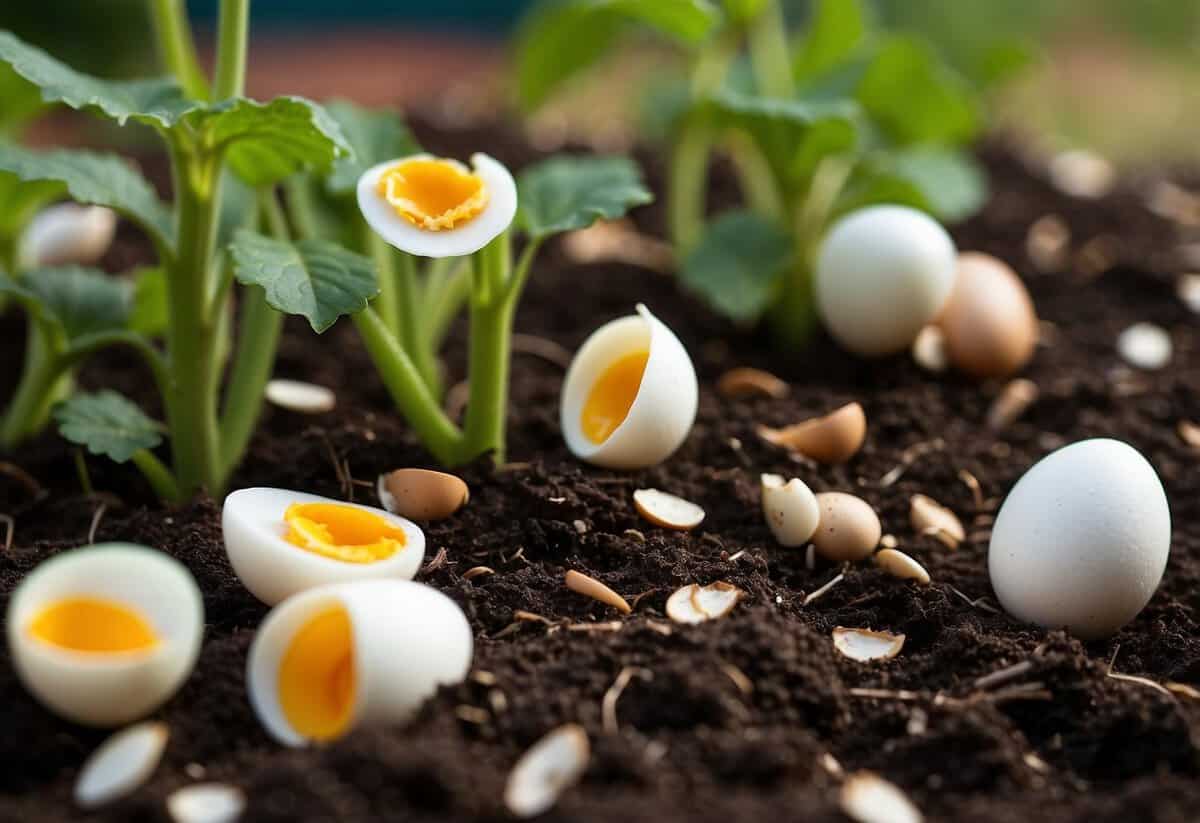Do Cucumber Plants Like Eggshells? Discover the Benefits!
Cucumber plants thrive with the right nutrients, and you might be surprised to learn that eggshells can play a crucial role in their growth. When you use eggshells, you provide a natural source of calcium which is essential for the development of strong cell walls in the plants. Adding crushed eggshells to the soil can boost your cucumbers’ health and protect them from pests, like slugs and snails, due to the sharp edges.

Not only do eggshells help in offering calcium, they also contribute other trace minerals like magnesium, phosphorus, and potassium. These nutrients are vital for the robust growth of your cucumber plants, ensuring they produce healthy and delicious cucumbers. By incorporating eggshells, you make use of organic waste and enhance the nutrient profile of your garden soil.
If you’re thinking about how to use these eggshells, it’s quite simple. Just clean and crush the shells into small pieces or grind them into a fine powder. Then, mix them into the soil around your cucumber plants. This method ensures that your cucumber plants get a steady release of nutrients as the eggshells break down over time.
The Role of Calcium in Cucumber Plant Growth

Calcium is a key nutrient that cucumber plants need for healthy growth. It helps in improving soil quality and strengthens the plants’ cell walls, ensuring robust and disease-resistant cucumbers.
Improving Soil Quality with Calcium
Adding calcium to the soil is essential for cucumber plants. It enhances the soil structure, making it more porous and better at retaining water and nutrients. When the soil is rich in calcium, it supports the roots in absorbing these nutrients efficiently.
You can add calcium to your garden soil by using natural sources like eggshells, which are about 34% calcium. You can crush them into a fine powder and mix them into the soil. This not only adds calcium but also improves the soil’s texture over time. Healthy soil is crucial for cucumber plant growth, ensuring they get the nutrients they need to thrive.
Adding calcium can also help neutralize soil acidity. This creates a more balanced environment for your cucumbers. Balanced pH levels in the soil mean your cucumber plants can grow without stress, leading to better yield and healthier plants.
Strengthening Cucumber Cell Walls
Calcium plays a significant role in the development of strong cell walls in cucumber plants. Strong cell walls are crucial for supporting the structure of the plant. They help cucumbers stand upright and resist various pressures from wind and pests.
When calcium is present in sufficient amounts, it aids in cell division and cell elongation. This is vital for plant growth. Moreover, calcium helps prevent common plant diseases by reinforcing the plant’s natural defenses.
Without enough calcium, cucumber plants may suffer from blossom-end rot and other deficiencies. By ensuring your plants receive adequate calcium, you can prevent these issues. Healthy cell walls also contribute to the overall strength and vigor of the plant, leading to better fruit quality and higher yields.
Eggshells as an Organic Fertilizer Option

Eggshells are a great choice for those seeking a natural and low-cost fertilizer. By using eggshells, you can provide your plants with essential nutrients such as calcium, which can improve plant health and crop yield.
Preparation of Eggshells for Garden Use
First, collect eggshells from your kitchen. Rinse them thoroughly to remove any egg residue, which can attract pests. Once clean, allow the shells to air dry.
Next, crush the dried eggshells into small pieces. You can use a mortar and pestle, a rolling pin, or even a food processor. Crushing the shells increases their surface area, helping them break down faster in the soil.
For a finer texture, you can grind the shells into a powder. This ensures quicker nutrient release when mixed into the soil. Store the crushed eggshells in an airtight container until you’re ready to use them in your garden.
Homemade Eggshell Fertilizer Recipes
A simple way to use eggshells as a fertilizer is to mix the crushed shells directly into the soil. Scatter the pieces around the base of your plants and lightly work them into the topsoil. This will provide a slow release of calcium and other nutrients.
Another method involves making an eggshell tea. To do this, steep a cup of crushed eggshells in a gallon of water for a few days. Afterward, water your plants with the mixture to give them a calcium boost.
You can also add crushed eggshells to your compost pile. Over time, the shells will break down and enrich your compost with important minerals. This ensures that when you use the compost in your garden, you’re adding valuable nutrients back into the soil.
Benefits of Eggshells in Garden Soil Ecosystem

Eggshells can significantly improve your garden soil ecosystem. They help fight off pests like slugs and snails and can enhance your compost.
Fighting Off Pests with Crushed Eggshells
Using crushed eggshells in your garden can help deter pests. Snails and slugs dislike crawling over the sharp edges of eggshells. This makes eggshells a natural, non-toxic way to protect your plants without using harmful chemicals.
To use eggshells against pests, wash and dry them first. Then, crush them into small pieces and sprinkle them around the base of your cucumber and other plants.
The shells create a barrier that pests don’t want to cross. This simple method not only keeps pests away but also adds calcium to the soil as the eggshells break down over time. Stronger and healthier plants are an added benefit.
Enhancing Compost with Eggshells
Adding eggshells to your compost is another great way to benefit your garden soil. Eggshells are rich in calcium, which is an essential nutrient for plant growth. Incorporating them into your compost helps create a nutrient-rich environment.
First, you should crush the eggshells into small pieces. This helps them break down more easily and mix well with other compost materials. When the eggshells decompose, they release calcium and other minerals into the compost.
These nutrients improve the soil structure and fertility, supporting robust plant growth. The slow release of calcium from eggshells ensures your plants get a steady supply of this important nutrient, promoting healthier growth and better yields for your cucumbers and other garden plants.
Proper Application of Eggshells to Cucumber Plants

Using eggshells can benefit cucumber plants by providing essential nutrients like calcium. It’s important to know how to apply them correctly to ensure your plants get the maximum benefit.
Direct Application Techniques
You can apply eggshells directly to the soil by crushing them into small pieces. Crushed eggshells break down slowly, releasing calcium and other minerals over time. This method helps keep the soil nutrient-rich and supports the growth of your cucumbers.
Steps for Direct Application:
- Collect and rinse eggshells to remove any residue.
- Let them dry completely.
- Crush them into tiny pieces, almost into a powder.
- Sprinkle the crushed eggshells around the base of each cucumber plant.
- Lightly mix the eggshells into the top layer of the soil using a small rake or your hands.
By doing this, you not only provide nutrients but also help improve soil pH balance, which can be essential for optimal cucumber growth.
Incorporating Eggshells into Planting Holes and Mulch
Another effective way is to incorporate eggshells into the planting holes and mulch when you are planting cucumbers. This method ensures a steady supply of calcium directly to the roots.
Steps for Planting Holes:
- When preparing the planting hole, mix a generous handful of crushed eggshells into the soil.
- Place your cucumber seedling in the hole.
- Cover the roots with soil mixed with eggshell pieces.
- Water the plant thoroughly.
Steps for Mulch Application:
- Collect and crush the eggshells as described.
- Spread a thin layer of crushed eggshells on the soil surface around your plants.
- Add a layer of organic mulch on top to keep the eggshells in place and help retain soil moisture.
Incorporating eggshells this way not only provides nutrients but also deters pests, protecting your plants and ensuring healthier growth.
Complementary Organic Practices for Cucumber Cultivation

To ensure healthy cucumber plants, it’s important to use diverse organic matter and actively monitor soil pH and nutrient levels. This helps create a nutritious environment for your plants, beyond just using eggshells.
Using Other Organic Matter Alongside Eggshells
While eggshells provide calcium, they are just one part of effective organic practices. Mixing in other organic matter, such as compost or aged manure, boosts soil fertility. Compost adds essential nutrients and improves soil texture, helping cucumber roots grow better.
Using organic fertilizers like fish emulsion or seaweed extract can also benefit your cucumber plants. These fertilizers, when used regularly, meet the nutritional needs of the plants during the growing season. You can find more about effective organic fertilizers such as Jobe’s Organics Vegetable & Tomato Fertilizer here.
Incorporating a variety of organic materials helps maintain a balanced soil environment, leading to healthier and more productive cucumber plants.
Monitoring Soil pH and Nutrient Levels
Maintaining the right soil pH is crucial for cucumber plants. They thrive in slightly acidic to neutral soil, with a pH range of 6.0 to 6.8. Regularly testing the soil helps you keep track of the pH levels and make necessary adjustments.
You can use soil test kits available at garden stores to check the pH. If the pH is too low, adding lime can raise it. If it’s too high, sulfur can lower it.
Additionally, monitoring soil nutrient levels is essential. Adding compost or organic fertilizers helps replenish depleted nutrients, ensuring your cucumber plants have everything they need. Detailed tips on monitoring soil health for cucumbers can be found here.
Keeping an eye on these factors ensures your cucumber plants grow strong and yield a good harvest.







